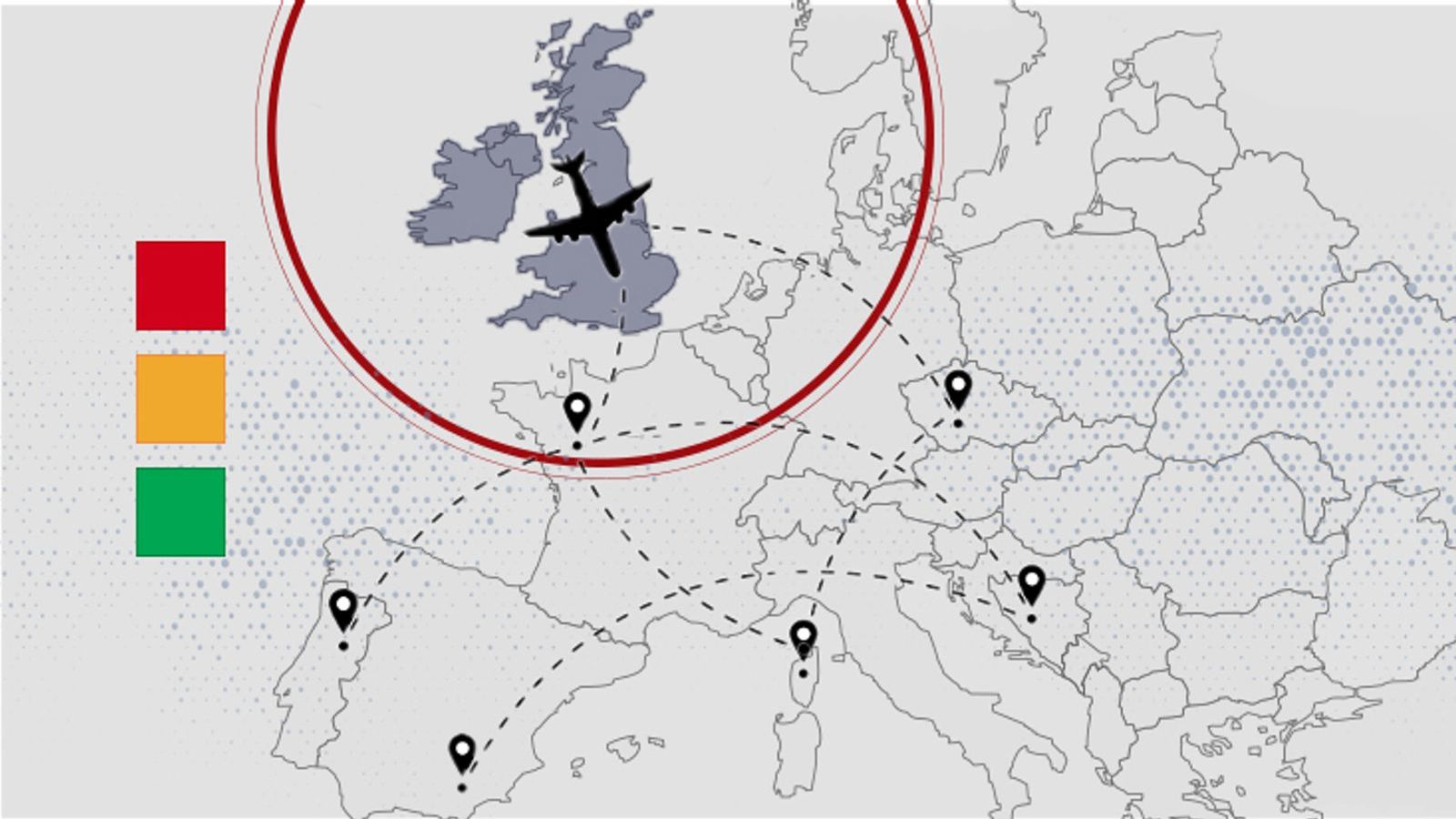Jamaica, Grenada and Nigeria are among the countries that could be moved to the red list today, according to a data expert.
The government is set to update its COVID-19 travel list as part of a review that happens every three weeks.
Countries and territories are listed as red, amber or green – with different rules for each of the three lists.
Sky News has spoken to data expert Tim White to find out which countries could be affected.
Which countries are in danger of being added to the red list this week?
Jamaica and Grenada, which are popular destinations for tourists in the Caribbean, could be added to the red list, according to Mr White.
Jamaica stayed amber in the previous review, but within hours the Foreign Office issued guidance saying it “advises against all but essential travel to the whole of Jamaica based on the current assessment of COVID-19 risks”.
Nicki Minaj’s COVID-19 vaccine ‘swollen testicles’ claim is false, says Trinidad health minister
COVID-19: Mandatory vaccination for care workers is ‘damaging a sector already on its knees’
COVID-19 hospital admissions figures ‘look scary’ but NHS is ready to ‘absorb’ rise, trust chief says
In the last few days, there has been a big spike in the number of people arriving from Jamaica with COVID-19.
Mr White said the transport secretary “would effectively be admitting a mistake three weeks ago” if he put Jamaica on the red list – and might not do so for that reason.
Grenada could become the first country to go directly from green to red because of an “astonishing” spread of COVID-19 on the small Carribean island, he said.
About 1,000 people per 100,000 are testing positive for COVID-19 each week, which Mr White said is “well into the danger zone”.
He thinks a few other small islands in the Americas could be added to the red list, but the only concerns in Europe this time are in the Balkans.
“Albania had one of the highest rates of infected arrivals in the most recent NHS results, but rates there seem low enough to keep it amber,” he said.
“Serbia has the strongest sustained COVID-19 growth in Europe right now, but levels are still below Montenegro when I warned it may go red three weeks ago.”
“Serbia’s vaccination rate is also better, so I think it avoids red too.
“Kosovo should already be red, but its fate could be linked with Serbia and seems set to survive again.”
Further afield, Iran and Iraq may yet again stay amber – though Mr White believes the fact they have remained so is a “mystery”.
In Africa, the data suggests Nigeria could be vulnerable, he said.
He said St Lucia is at risk because infection rates increased after the last travel review – but they are now declining and the case numbers are low overall, leading him to suspect that the country will be spared.
Which countries could be taken off the red list?
The Maldives are most likely to be taken off the red list and moved to amber, according to Mr White.
“It is madness that the popular archipelago was not removed from red three weeks ago,” he said.
He said case numbers there are low, with almost all of them on Male, the main island which is not popular with tourists.
Mr White said the “excuse” given for the country staying red was that it did not submit genomic sequencing data, which is used to identify variants – but it has now done so and is among the top 32 reporting countries.
“There are no more excuses: sense must prevail,” he said.
The data expert said the Dominican Republic should be removed but may not be because it does not carry out genomic sequencing.
“In my opinion it’s nonsense,” he said.
“The risk of a mutant developing in such a small number of cases in the Dominican Republic is incredibly small, and much less likely than in Russia, or even India, giant countries on amber with areas of very high infection, but where over the whole country rates look acceptable.”
People hoping for Pakistan and Turkey to be removed from the red list may be disappointed.
“Neither has conclusive data for me to say they should be removed,” Mr White said.
He said Pakistan has “bad” test and trace figures, with 3.2% of all arriving passengers testing positive for COVID-19.
Even though cases are decreasing, the percentage of COVID-19 tests which are positive in Pakistan is a little higher than 5%, which Mr White sees as a benchmark.
Pakistan is not doing enough genomic sequencing, Mr White said, which may also pose a problem.
Are any of the main holiday destinations under threat in this week’s travel review?
Mr White said none of the big European holiday destinations are in any danger in the upcoming review.
“In the last three weeks infection rates have been coming down in almost all the major holiday hotspots like France, Spain, Greece, Italy, Cyprus and Portugal,” he said.
He said the only country popular with UK tourists to see a rise has been Croatia due to a “hotspot” of cases heading north and east across the continent.
“If you’re planning to head to Dubrovnik, Split, Zadar or any of the other Croatian delights, don’t fear,” he said.
“The seven-day infection rate is nowhere near worrying levels, indeed currently being a little lower than Austria which was added to the green list only last month.”






















